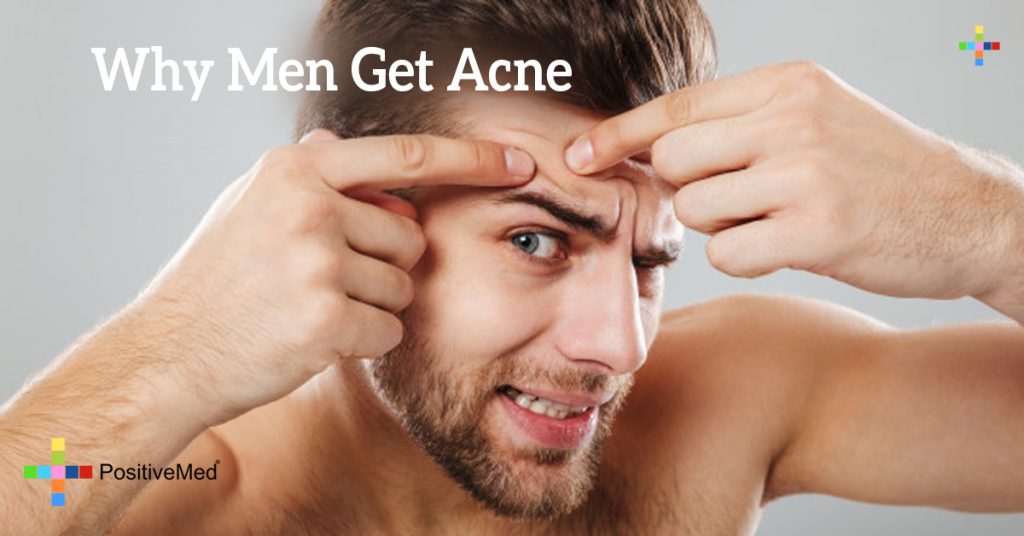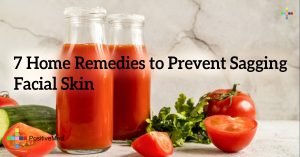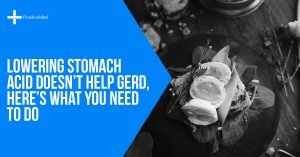
Male Hormonal Acne 101
Part I: Why Men Get Acne
Part II: How to Get Rid of Male Acne
Part I: Why Men Get Acne
While acne in men may not be considered dangerous, it certainly can be very distressing —and is surprisingly common as well. Over 25% of acne sufferers are men and this includes not just adolescents but grown men. In fact, during the last decade the median age of people with acne (including men) has risen by almost 23%, from 20.5 to about 26.5 years of age. In addition, guys have obviously less chance to camouflage acne with make up while at the same time their acne is usually more difficult to treat. The newer generation of men in general tend to be more concerned with their appearance, and more focused (and spending) on their looks including wellness, grooming and attire.
Why do guys get hard-to-treat acne?
Acne is a visible manifestation of an internal imbalance that leads to overproduction of sebum (skin oil) by sebaceous glands. This extra sebum together with dead skin cells and dirt creates an ideal condition for bacteria to grow. This skin condition will result in local inflammation that presents itself as acne (pimples, cysts, blackheads, whiteheads etc).
The most potent stimulators of sebaceous glands are the male hormones known as androgens including testosterone. While both women and men actually produce all three types of $e*u@l hormones (testosterone, estrogen and progesterone), men naturally secrete much more androgens; therefore their cases of hormonal acne may be more severe and prevailing (chronic). In addition, testosterone levels increase due to exercise which can lead to a greater likelihood of developing acne or making existing acne worse.
Understanding that androgen related hormones can influence sebaceous glands secretions is only part of the story. Only 1-2% of these hormones circulate freely in the blood; the other 98% are bound to a protein called $e* Hormone Binding Globulin (SHBG). If the androgen hormones are bound to SHBG in the blood, they are less likely to cause acne. It is only the “free form” of testosterone and its analogs, DHT and DHEAS that can cause the sebaceous glands to make more sebum. Since men naturally have more testosterone related hormones in their bodies, it is more likely that more of the analogs (DHT & DHEAS) may be found in the free form leading to an increased risk of acne. Understanding how these analogs of testosterone impact sebaceous gland secretions also helps explain why guys who take anabolic steroids are prone to acne; these anabolic hormones do not bind very well to SHBG.
Male Acne Causes: Truth and Myths
Since androgens are the main reason men get acne, there are some factors that may exacerbate acne symptoms for different people that go unnoticed. Paying attention to these factors may help control acne outbreaks and speed up treatment results. Controlling these factors ALONE however is NOT sufficient enough to treat and prevent acne.
Diet
Research suggests that spikes in insulin levels in the blood can cause inflammation in the skin, leading to breakouts. Casual observations also confirm that limiting simple carbohydrates, switching to a whole grain and low sugar diet and limiting processed foods that include sugar can help to keep skin healthy.
Good and bad fats can also play a role in helping guys to maintain clear skin. Fried food and high in saturated fats are bad not only for our bodies but also for our skin. Food rich in Omega-3s such as chia seeds, salmon, trout, sardines, avocado, nuts and even EPA supplements can reduce the inflammation and therefore help to keep those pimples at bay.
Stress
Researchers believe that stress hormones can worsen acne. Certain steroid hormones, like glucocorticoids and adrenal androgens, are released during stress, and are thought to contribute to acne breakouts by activating the oil glands, stimulating sebum production (which can lead to the clogging of pores) and initiating pimple formation. Individuals that are in stress filled environments (in the physical and mental sense) such as our military are examples of those who might experience this condition. Others who are dealing with stressful circumstances in their lives may also experience an acne breakout or a worsening of existing acne.

Sun
There is preliminary data to suggest that several years of sun exposure may increase the skin’s oil production. After all, the skin protects itself against over drying agents like salicylic acid, alcohol, peroxide, sun and wind. So, if you are living in a sunny climate, do not forget to use a non-comedogenic (non pore clogging) sun protection product and moisturizer.
Sex
Sex is actually considered beneficial to the skin. Since acne is a visible manifestation of an internal imbalance that is most often routed in a hormonal imbalance, specifically an imbalance of sex hormones (androgens/testosterone, estrogen and progesterone), sex balances our hormone levels, which may help in keeping your skin clearer. Having sex will also improve blood circulation, which helps to deliver oxygen to your skin and in addition to adding a healthy glow and keeping skin supple, nourished and looking young, it will also help to eliminate toxins. Finally, research shows that people with a healthy sex life take care of themselves better so they will also commit more effort to treating their acne.
Back Acne
Back acne is fairly common among acne sufferers. Back and body acne affects men and women, teens and adults. However, body acne is much more common, and often more severe, in males. Most often, acne begins on the face. As acne progresses in range and severity, it begins to affect other areas of the body as well. Not everyone with acne will experience breakouts on the body, but those with body acne nearly always have acne on their face as well. Body acne is generally confined to the back and upper torso. Like the face, these areas have more sebaceous glands per square inch than other areas of the body, so the follicles are more likely to become plugged with excess sebum and dead skin cells .
Body acne is therefore caused by the same factors that trigger facial acne: overactive oil glands, excess dead skin cells, and a proliferation of acne-causing bacteria. Sebum and dead skin cells become trapped within the follicle, or pore, and create a blockage. This blockage becomes a blackhead and may progress to a pimple. If bacteria invade the clogged pore, and start the inflammatory cascade, the pimple may precede to pustules and papules.
Since sweat can also irritate body acne, this is of particular interest to guys who play sports and workout. To minimize irritation initiated by sweating, shower as soon as possible after exercising. Contrary to popular belief, you should NOT scrub your skin even with a loofah or body puff. Simply use your hands or a soft wash cloth to cleanse your skin. Remember, you want to avoid friction and irritating your skin or further clogging your pores. A thorough, but gentle cleansing — preferably with an intermittent salicylic acid wash is better than a vigorous scrubbing.

Razor bumps
Men also can develop acne-like pimples known as folliculitis or more commonly as “ razor bumps .” They may come from the small nicks caused by shaving too closely. Bacteria enter the follicles and cause infection. One way to distinguish razor bumps from real acne is that with a follicular pimple you often can see the hair shaft at the center of the pimple. Try to use an electric shaver that may not provide such a close shave, but may not cause as many issues. In either event, keep the skin clean and exfoliate once a week (if you do not have active acne), which may also help in preventing razor bumps.
Knowing how your acne starts and how you can prevent it are imperative to living an acne free lifestyle. Stay tuned for Part II on How to Get Rid of Male Acne.
 Dr. Agnes Olszewski, CEO of Herborium, natural medicine expert
Dr. Agnes Olszewski, CEO of Herborium, natural medicine expert
“My work in China in the pharmaceutical and healthcare sector, and my personal experience while growing up in Europe, inspired me to develop Herborium®, a novel Botanical Therapeutics® company, based on a new, innovative healthcare concept that combines science and nature. Our approach has already been proven up to 98% effective in our acne treatment, AcnEase®
.”







